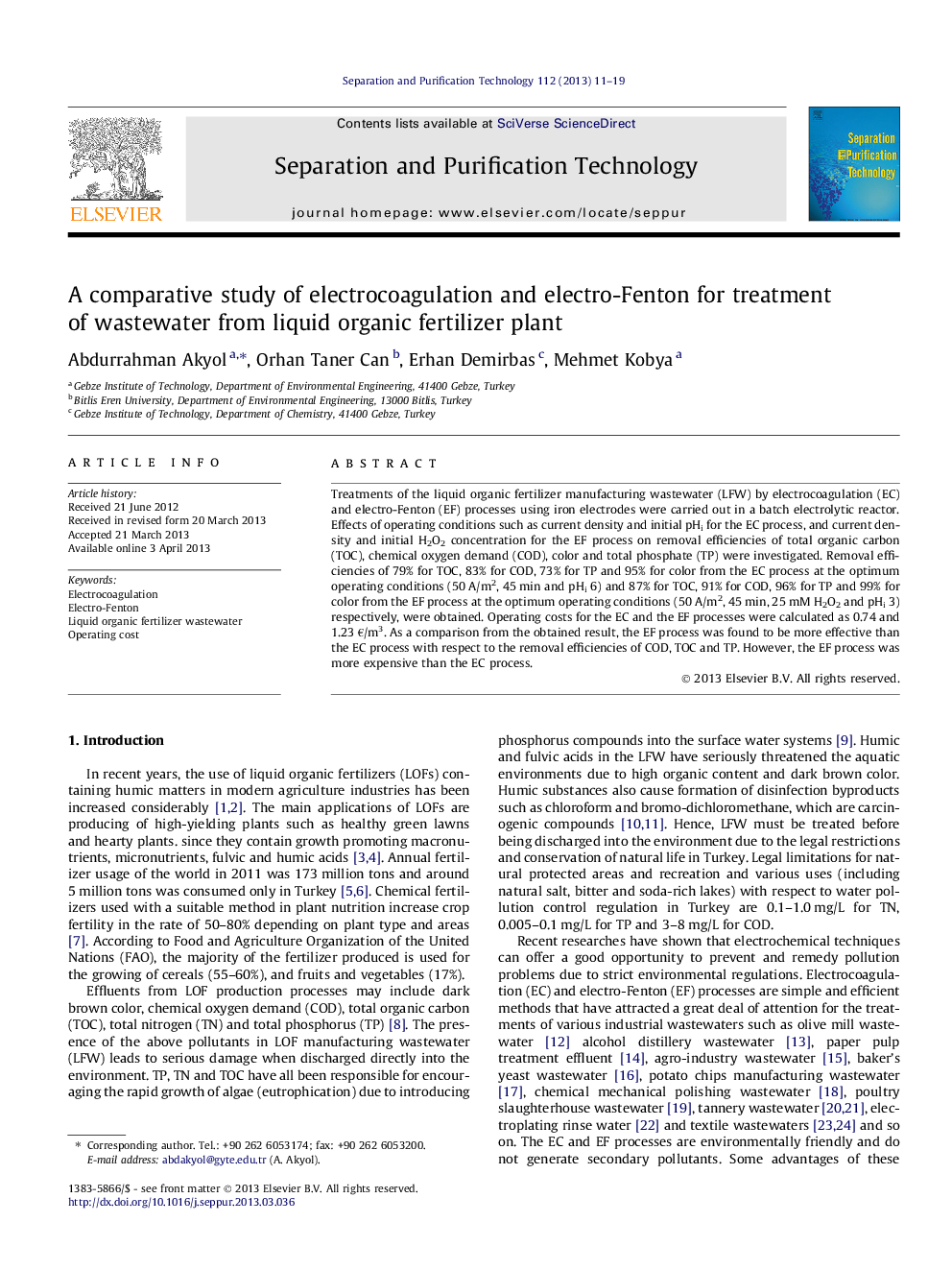| Article ID | Journal | Published Year | Pages | File Type |
|---|---|---|---|---|
| 641618 | Separation and Purification Technology | 2013 | 9 Pages |
•The EF process was found to be more effective than the EC process regarding to LFW.•EF has provided high TOC, COD, TP and color removal efficiency (87%, 91%, 96%, 99%).•Operating costs of EF and EC processes were calculated as 1.23 and 0.74 €/m3.•Sludge produced in the EF process was quite lower than that of the EC process.
Treatments of the liquid organic fertilizer manufacturing wastewater (LFW) by electrocoagulation (EC) and electro-Fenton (EF) processes using iron electrodes were carried out in a batch electrolytic reactor. Effects of operating conditions such as current density and initial pHi for the EC process, and current density and initial H2O2 concentration for the EF process on removal efficiencies of total organic carbon (TOC), chemical oxygen demand (COD), color and total phosphate (TP) were investigated. Removal efficiencies of 79% for TOC, 83% for COD, 73% for TP and 95% for color from the EC process at the optimum operating conditions (50 A/m2, 45 min and pHi 6) and 87% for TOC, 91% for COD, 96% for TP and 99% for color from the EF process at the optimum operating conditions (50 A/m2, 45 min, 25 mM H2O2 and pHi 3) respectively, were obtained. Operating costs for the EC and the EF processes were calculated as 0.74 and 1.23 €/m3. As a comparison from the obtained result, the EF process was found to be more effective than the EC process with respect to the removal efficiencies of COD, TOC and TP. However, the EF process was more expensive than the EC process.
